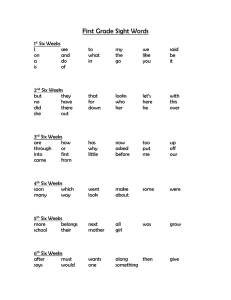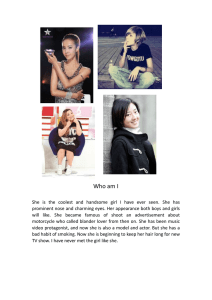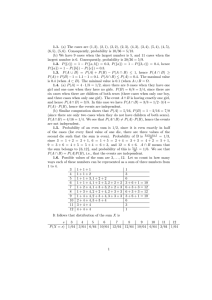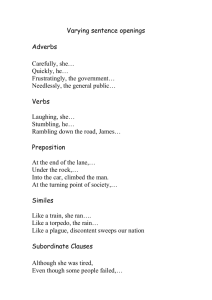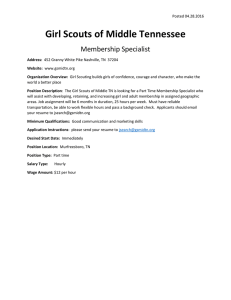NC DPI & NORTH CAROLINA LEAs: COLLABORATING FOR BEST PRACTICE
advertisement
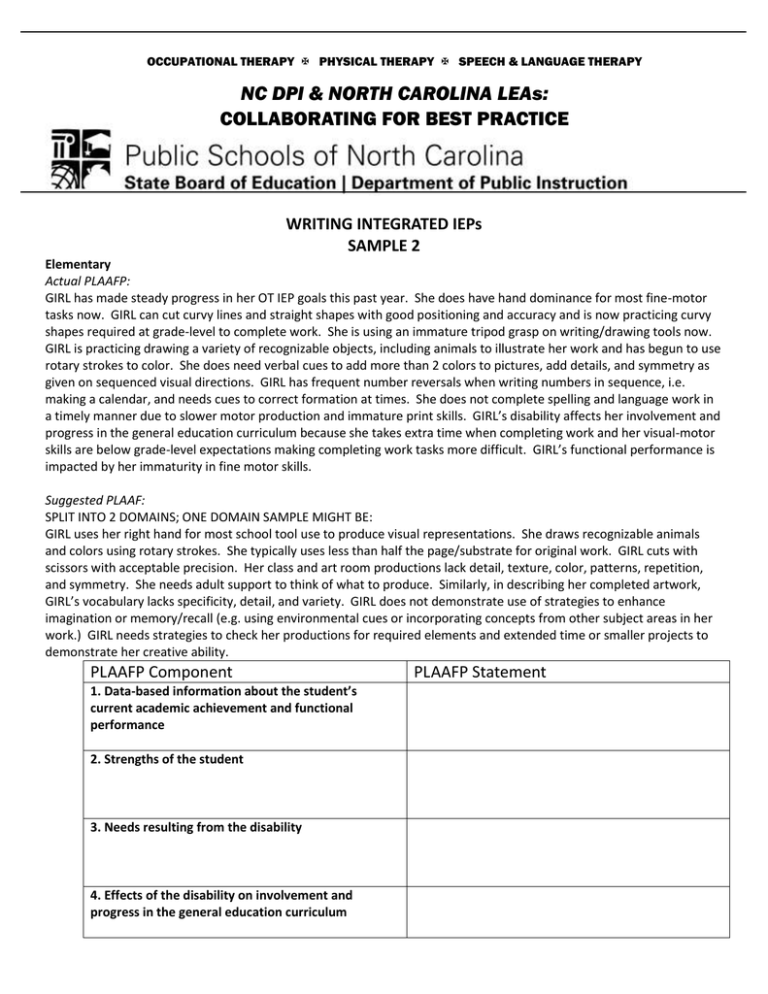
OCCUPATIONAL THERAPY PHYSICAL THERAPY SPEECH & LANGUAGE THERAPY NC DPI & NORTH CAROLINA LEAs: COLLABORATING FOR BEST PRACTICE WRITING INTEGRATED IEPs SAMPLE 2 Elementary Actual PLAAFP: GIRL has made steady progress in her OT IEP goals this past year. She does have hand dominance for most fine-motor tasks now. GIRL can cut curvy lines and straight shapes with good positioning and accuracy and is now practicing curvy shapes required at grade-level to complete work. She is using an immature tripod grasp on writing/drawing tools now. GIRL is practicing drawing a variety of recognizable objects, including animals to illustrate her work and has begun to use rotary strokes to color. She does need verbal cues to add more than 2 colors to pictures, add details, and symmetry as given on sequenced visual directions. GIRL has frequent number reversals when writing numbers in sequence, i.e. making a calendar, and needs cues to correct formation at times. She does not complete spelling and language work in a timely manner due to slower motor production and immature print skills. GIRL’s disability affects her involvement and progress in the general education curriculum because she takes extra time when completing work and her visual-motor skills are below grade-level expectations making completing work tasks more difficult. GIRL’s functional performance is impacted by her immaturity in fine motor skills. Suggested PLAAF: SPLIT INTO 2 DOMAINS; ONE DOMAIN SAMPLE MIGHT BE: GIRL uses her right hand for most school tool use to produce visual representations. She draws recognizable animals and colors using rotary strokes. She typically uses less than half the page/substrate for original work. GIRL cuts with scissors with acceptable precision. Her class and art room productions lack detail, texture, color, patterns, repetition, and symmetry. She needs adult support to think of what to produce. Similarly, in describing her completed artwork, GIRL’s vocabulary lacks specificity, detail, and variety. GIRL does not demonstrate use of strategies to enhance imagination or memory/recall (e.g. using environmental cues or incorporating concepts from other subject areas in her work.) GIRL needs strategies to check her productions for required elements and extended time or smaller projects to demonstrate her creative ability. PLAAFP Component 1. Data-based information about the student’s current academic achievement and functional performance 2. Strengths of the student 3. Needs resulting from the disability 4. Effects of the disability on involvement and progress in the general education curriculum PLAAFP Statement Actual Goals: • GIRL will complete visual-motor tasks, such as cutting or drawing with detail and accuracy and meet grade-level handwriting expectations in school. Suggested Goals: • Given a project prompt, GIRL will illustrate, title, and describe her visual creation, using multiple colors, tools, textures, techniques, descriptive terms, and incorporate at least one instance of pattern, symmetry, or repetition within the allotted time, 3 of 4 trials. Annual Goal Component Annual Goal Statement 1. Given/Conditions (when or under what conditions), as applicable 2. Skill/Curriculum/Behavior Area or Domain (Academic/Functional) 3. Observable Learner Performance (Action) 4. Desired Level of Achievement/Outcome (Measurable Criteria…how well, how many times, over what period of time) What disciplines might participate in this integrated IEP development? List below.

